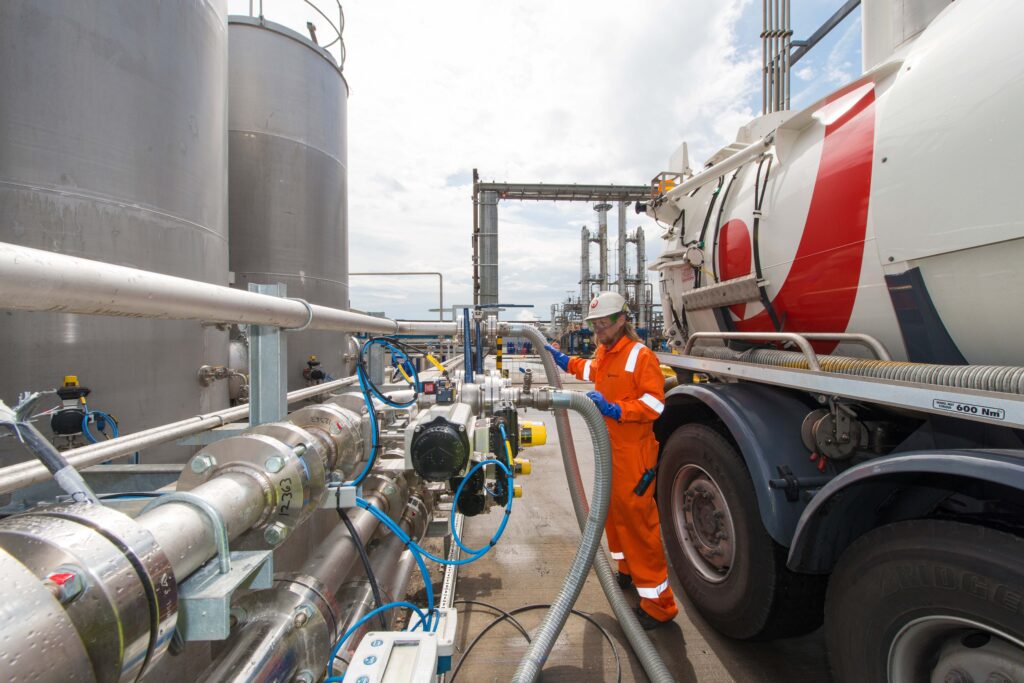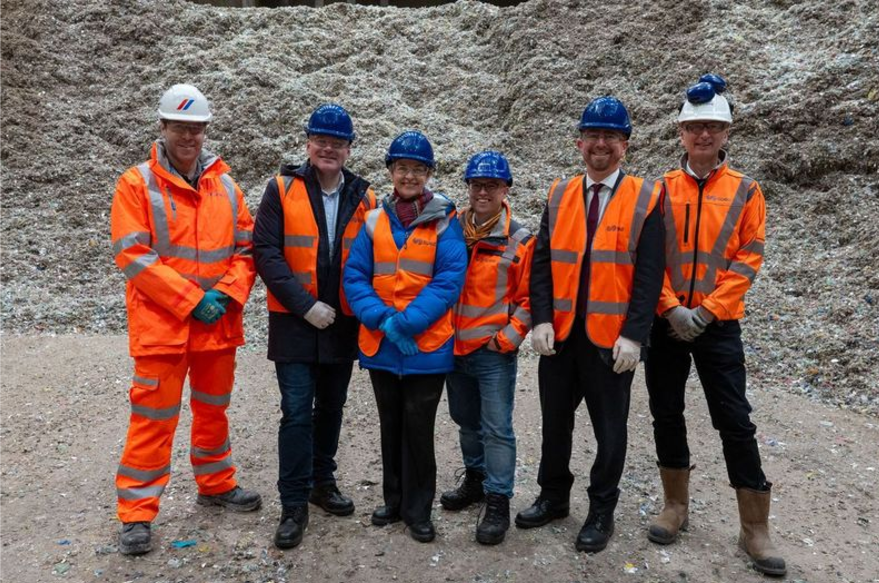Recycling of these used solvents, waste paint thinners and solvent-based paint, will create new products as an alternative to virgin solvents, so that they can be used again in industries including pharmaceuticals, semiconductors, paint, agrochemicals and cement manufacture.
As part of Veolia’s plan ‘GreenUP’, this recovery process aims to save a predicted 172,000 tonnes CO2e in greenhouse gas emissions each year, compared to virgin resources, said to be the equivalent to taking 78,000 diesel cars off the road annually.
Waste materials are processed at the site to regenerate them into recycled products that can be reused, displacing virgin materials in the supply chain. The facility uses various distillation techniques to separate residues from the wastes, and then to further separate solvent mixtures into products suitable for industrial customers.
Distilled product fuel
As well as generating products, the plant also produces several types of fuel. A distilled product fuel is used instead of natural gas, to power the site’s steam boilers.
Other by-products from the process are sent to Veolia facilities to be manufactured into alternative fuels for use in the cement industry.
The increased processing capacity has been achieved by installing new distillation columns to separate liquids, and 17 tanks to store or transfer the solvents. Transport is handled through two new high throughput tanker loading bays which manage logistics for offloading waste for processing, and load the recycled solvents ready for customer delivery.
Preserving resources
Nicola Henshaw, managing director, hazardous, at Veolia UK said: “This latest expansion of our solvent treatment capabilities demonstrates our commitment to deliver high quality recycled products derived from advanced waste treatment.
“This highlights the effectiveness of our GreenUp strategy, and further strengthens our position as the world leader in hazardous waste treatment. By preserving resources, reducing reliance on virgin materials, and delivering sustainable products to support manufacturers, we can also create major carbon savings.”










Subscribe for free